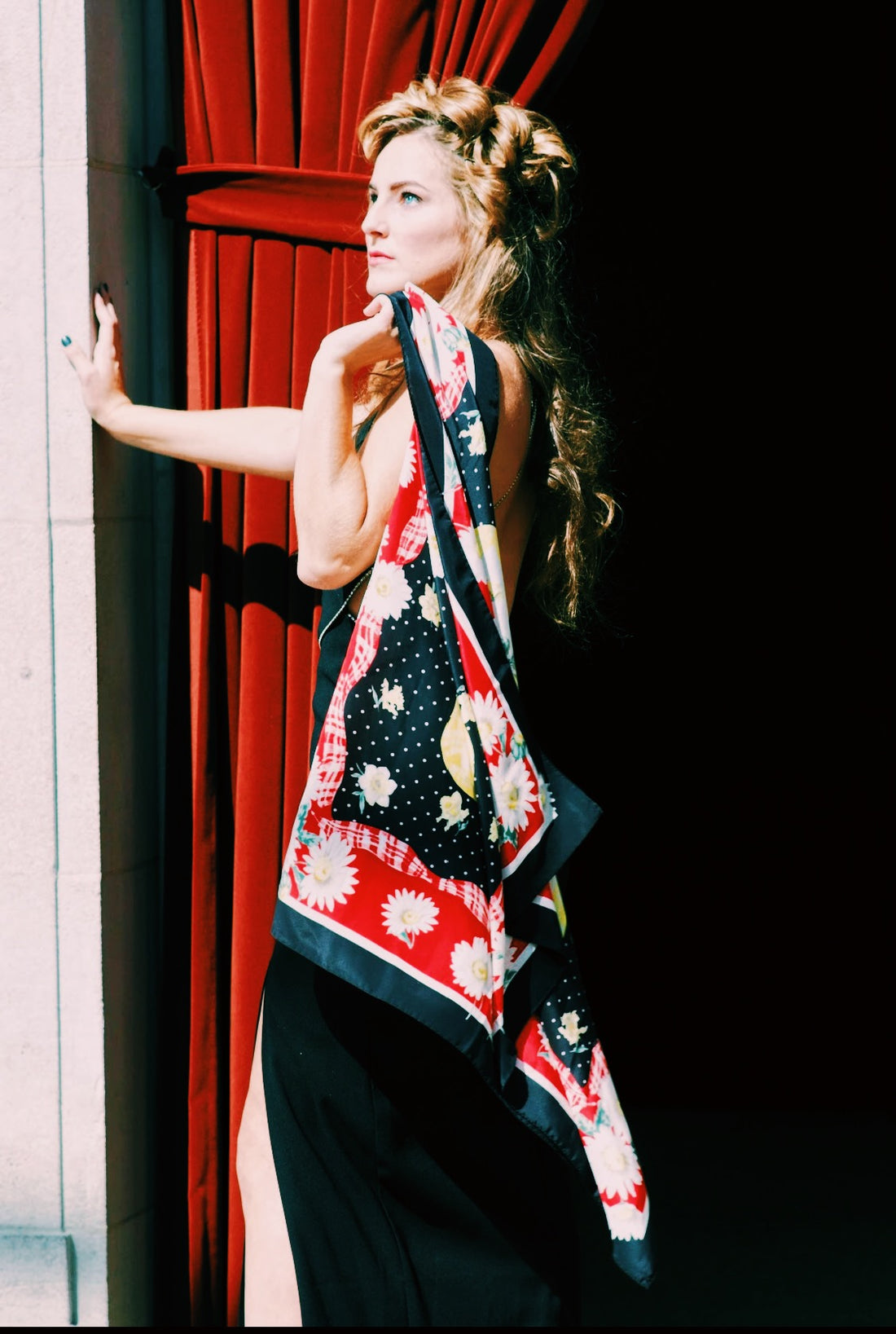
Fashion Flashback: Scarves & Foulards
Fashion Flashback: Scarves & Foulards by Morgan Watkins
With fall kicking up crunchy orange leaves followed by the wafting aroma of all things pumpkin spice, it is due time for the return of one of autumn’s most beloved accessories: the scarf. While they can be worn all year round in an endless combination of styles and fabrics, scarves and foulards are the epitome of the colder season to come. Read on to learn more about where these cozy accessories originated and how they’ve evolved over past centuries.

It was in Ancient Egypt that the first recorded scarf was worn. Queen Nefertiti, a woman known for her beauty and her reign alongside husband, Pharaoh Akhenaten, wore a scarf tightly around her neck around 1350 B.C. Later on in 230 B.C., cloth scarves were used to show military rank among the people of China while under the rule of Emperor Cheng. Silk equated to higher level positions, while those of lower ranks donned scarves made of cotton. This trend in establishing rank would carry onto the 1600s, where Croatian mercenaries wore scarves, or “cravats,” of varying colors to display who stood where on the military totem pole.
By the 1700s, scarves became a symbol of condolences In New England as they were handed on to mourning families by funeral attendees. Eventually, Massachusetts legislature determined that this form of “funeral extravagance” would be no more and passed a law barring the exchange of scarves. It was around this time that the knit scarf came to fruition via the Third Duke of Krakow, who wanted a scarf that would keep his neck warm as opposed to serving solely as a fashion statement.
Another man who enjoyed a lovely scarf was the famously renowned composer, Beethoven, who was said to have worn a silk scarf paired with dapper suits in an attempt to woo his beloved Therese Malfatti. Over time, silk scarves became even more popular as they were used as accessories to define status and wealth in the early 1800s and throughout the entirety of the Victorian Era. Within this timeframe, designers known for their scarves, like Hermès and Burberry, were born. Unfortunately, it took an entire century before Hermès dove into creating their notoriously iconic graphic silk scarves. Burberry, the brand famous for their signature plaid accessories, also would not design their cashmere neckwear until the mid-to-late 1900s.

(Image from https://www.therealreal.com/products/women/accessories/scarves-and-shawls/hermes-l es-cles-silk-scarf-NG6-VbjUHGE)
Dance culture also had an impact on the rise of scarves in history. Back in the later 1200s, Egyptian belly dancers commonly wore scarves tied low on the hips to accentuate their movements and style. Fast forward to the early 1900s and long, flowing scarves were trending, thanks to dancer Isadora Duncan. Duncan ironically passed away from an accident involving the tangling of her scarf with an automobile wheel, but the memory of her most cherished accessory lived on. Fur scarves took over French fashion in the 30s, while wearing neckwear around the forehead was in vogue during the hippy days of the 70s.
(Image from https://talkingfashion.net/products/fur-velvet-scarf-brown-slim-long-luxurious-vintage-acc essory)
It is worth noting that scarves and foulards are not merely worn by individuals to superficially boost the overall aesthetic of an outfit, as they can be worn for religious and cultural purposes as well. Colorful and patterned head scarves may be worn by African women, or women of African descent, to celebrate their heritage and culture. Muslim women don hijabs as a symbol of modesty and religious virtue, while turbans are seen on the heads of men and women practising Sikhism. Last year, Nike disclosed that they would begin selling performance hijabs for athletes of Muslim faith, taking a grand step in the right direction towards including Muslim individuals in American culture as well as standing in solidarity for Muslim rights.

(Image from https://www.usatoday.com/story/news/world/2017/12/20/nike-begins-selling-sports-hijab -muslim-female-athletes/970226001/)
From easy breezy infinity scarves to free flowing cashmere wraps, scarves offer endless possibilities to style and accessorize your look. Regardless of what kind of scarf you wear or why you wear it, these accessories are reliable, simple staples available to all genders, ages, cultures and faiths. If you’re in the market for a fancy foulard or to sell a snazzy scarf, check out talkingfashion.net for some sleek styles and consignment options!
References:
“THE HISTORY OF SCARVES: A TIMELINE.” Scarves.net, 25 Jan. 2012, https://www.scarves.net/blogs/scarves/the-history-of-scarves-a-timeline. Stanglin, Doug.
“Nike Begins Selling Sports Hijab for Muslim Female Athletes.” USA Today, 20 Dec. 2017, https://www.usatoday.com/story/news/world/2017/12/20/nike-begins-selling-sport s-hijab-muslim-female-athletes/970226001/.



